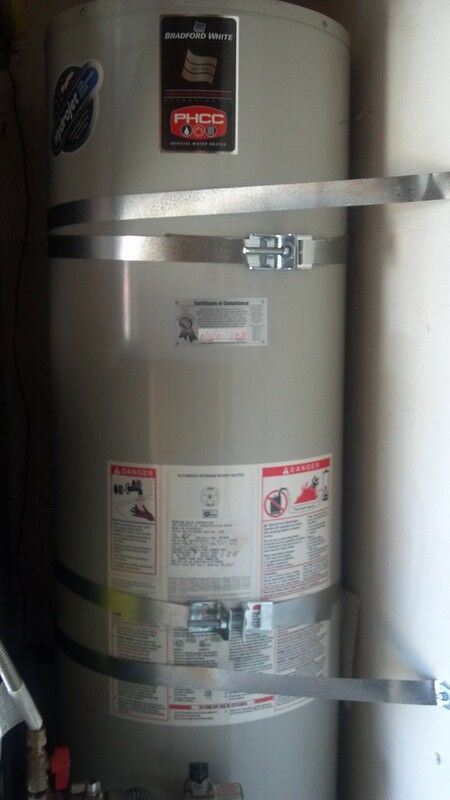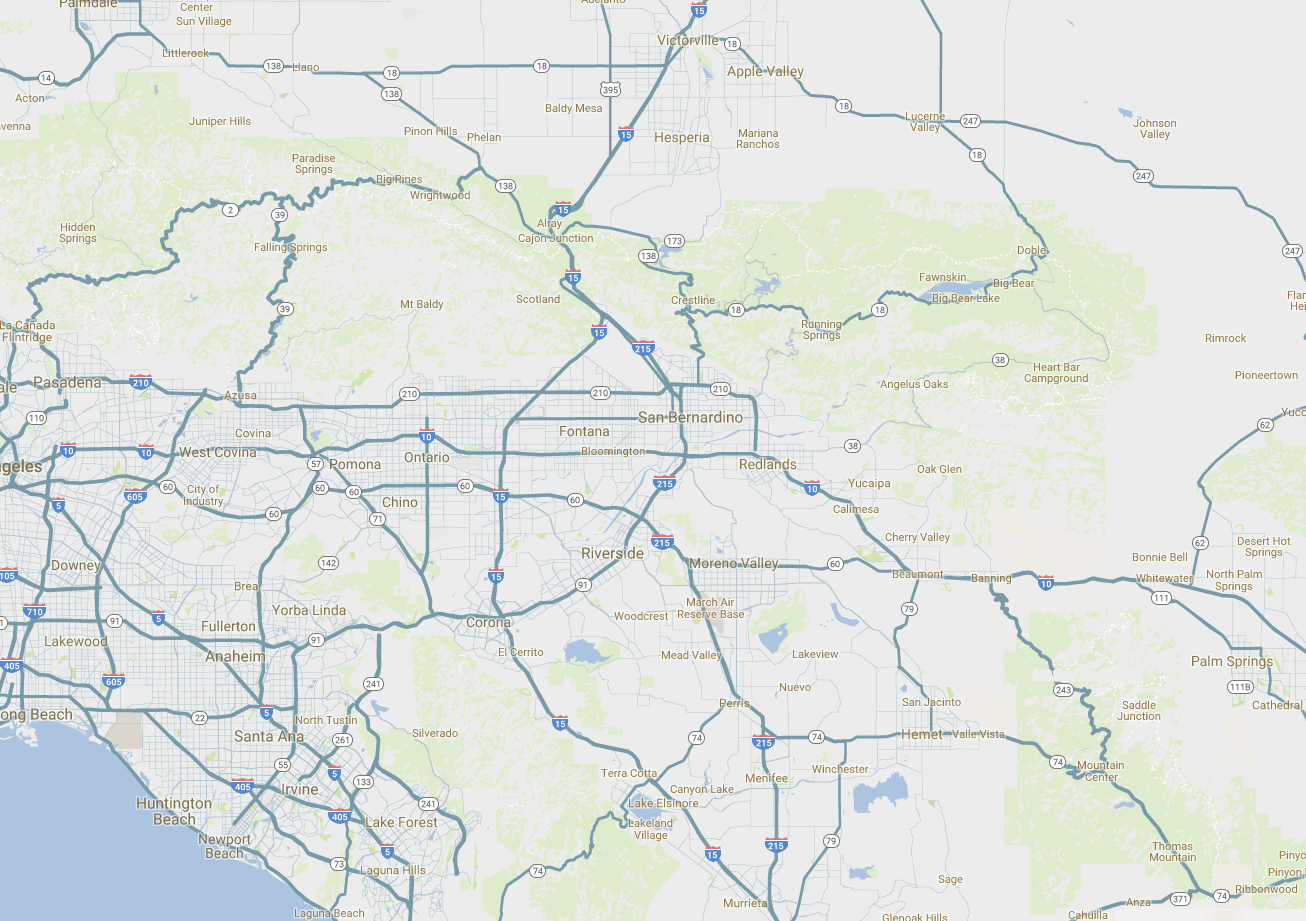If you’re a resident of southern California, chances are you’re ready for an earthquake...but is your home’s plumbing ready?
Plumbing fixtures and systems are not only expensive to fix if damaged, but can cause significant external and internal damage to your home if they are not properly prepared for an earthquake.
In this blog, we’ll show you how to prepare your plumbing for an earthquake. We’ll also share steps you can take post-earthquake to ensure your safety and your home’s safety in regards to your plumbing.
-------
Want a professional to assess the safety and stability of your home’s plumbing fixtures and systems? We’d be happy to help you! Contact us by calling 909-792-2222 or by reaching out online.
-------
3 steps to take pre-earthquake
Step #1: Secure your water heater
During an earthquake, a water heater can detach from the wall or floor, potentially causing significant electrical damage, water damage and/or a gas leak.
To prevent your water heater from causing damage to your home, we’d recommend securing your water heater.
Water heater restraints are typically made out of nylon or galvanized steel and are intended to give your water heater extra support in case of a seismic event.
Both types of restraints are attached to the wall and wrap around your water heater to secure it. According to the State and Consumers Services Agency, California residents are actually required to have their water heaters strapped (gas and electric) to the wall. Two straps are required, one on the upper one-third of the tank and one on the lower one-third.
Step #2: Install An Automatic Gas Shutoff Valve
As we mentioned above, earthquakes can cause gas leaks. To prevent your gas appliances and/or lines from leaking, you should install an automatic gas shutoff valve.
An automatic gas shutoff valve is a small device placed above the gas meter. It will automatically shut off gas when it detects seismic activity, preventing a leak or potential explosion. You will need to hire a qualified professional to ensure that your automatic shutoff valve is installed correctly.
If you don’t want to install a seismic valve or simply want an alternate option while you wait for a seismic valve to be installed, you can manually turn off the gas to your home. The key is to know where those shutoff valves are before the earthquake, and to make sure everyone in your household knows where they are as well.
There are two main shutoff valves to pay attention to:
- Street-side shutoff valve- The street-side shutoff valve is located outside of most homes near the gas meter. Street-side shutoff valves usually require a wrench to turn on and off and gas companies typically prefer homeowners not to touch this valve. Instead, we’d recommend turning off the gas to your home with the house-side shutoff valve.
- House-side shutoff valve- The house-side shutoff valve will be inside the home or garage, usually near where the gas line enters the home. The shape and size of this valve varies depending on the home, but it’s typically a rectangular knob that’s parallel to the gas pipe (meaning the gas is on). To turn the valve off, turn the knob perpendicular to the gas line.
While we suggest turning your gas off at the house-side shutoff valve, not all homes have such a valve.
If you do not have a house-side shutoff valve, we’d suggest buying a gas meter wrench and putting it near your street-side gas shutoff valve. This way, you can quickly locate the wrench and shut off the gas supply to your home.
Note: If you need help locating your street-side or house-side shutoff valves, we’d suggest reaching out to your local gas company for help.
Step #3: Locate Your Water Shutoff Valve
The location of a home’s water shutoff valves varies, but most can be found:
- In a basement (usually on a wall near the front of the house)
- On a perimeter wall
- In the garage
- Underground near your property line
The water shutoff valve will more often than not look like your gas shutoff valve (a rectangular knob), but it can also have a wheel shape.
The location of your water shutoff valve should be in your property inspection report from when you purchased your home. However, if you don’t own your home or can’t locate your water shutoff valve, you can always reach out to a plumber to help you locate it.
Note: If your water shutoff is located underground near your property line, your home’s shutoff valve is likely close to the city’s shutoff valve. Be careful not to tamper with the city’s shutoff valve and only turn your home’s valve on and off. If you aren’t sure which valve is which, reach out to a plumber or your local utility company to help you identify each valve.
2 Steps to take post-earthquake
Step #1: Knowing the signs of a slab or gas leak
Earthquakes can cause slab or gas leaks, which are two of the most expensive types of leaks that occur in residential homes. Leaks like these aren’t always visible, which is why it’s important to pick up on other signs that indicate you have a leak.
Signs of a slab leak
You may have a slab leak if you notice:
- Wet or damaged flooring
- Hotspots of flooring throughout your home
- Higher water bills
- Low water pressure
- Standing water
- Sound of running water
- Moisture or mildew growth
If you suspect a slab leak, reach out to a plumber immediately. Slab leaks can cause extensive damage to your home if they’re not taken care of quickly.
Signs of a gas leak
A gas leak can cause:
- Rotten egg or sulfur smell
- Dead or dying houseplants
- Fatigue and dizziness
- Hissing sound
If you think you may have a gas leak, leave your home immediately without touching any electrical switches. Once you’re outside, call your local gas company to come and take a look at your home. Do not reenter until a professional has deemed it safe.
Step #2: Check all piping and venting post-earthquake
After an earthquake, it’s important to hire a professional plumber to check all piping and venting in your home.
During an earthquake, vents and pipes can separate or crack. Even if the damage isn’t visible, it’s a safe bet to hire a professional service company to assess your plumbing and HVAC systems.
If you have a gas furnace or water heater, make sure a professional confirms the flue is connected properly. During an earthquake, the pipe can become detached or seriously damaged, and harmful gases can make their way into your home.
To ensure your flue is connected properly, you’ll want to reach out to a technician who can evaluate the pipe and determine if it’s connected properly.
Ready to prepare your home’s plumbing for an earthquake? Contact Burgeson’s
If you’d like to install an automatic gas shutoff valve or need a team of professionals to check your home’s plumbing after an earthquake, reach out to us. At Burgeson’s, we’ve been serving Southern California homeowners for the last 72 years. Our team is highly experienced in preparing residential plumbing for earthquakes and in ensuring plumbing is working safely after an earthquake occurs.
If you need an expert team of plumbers you can trust, request an appointment or give us a call today at 909-792-2222.













